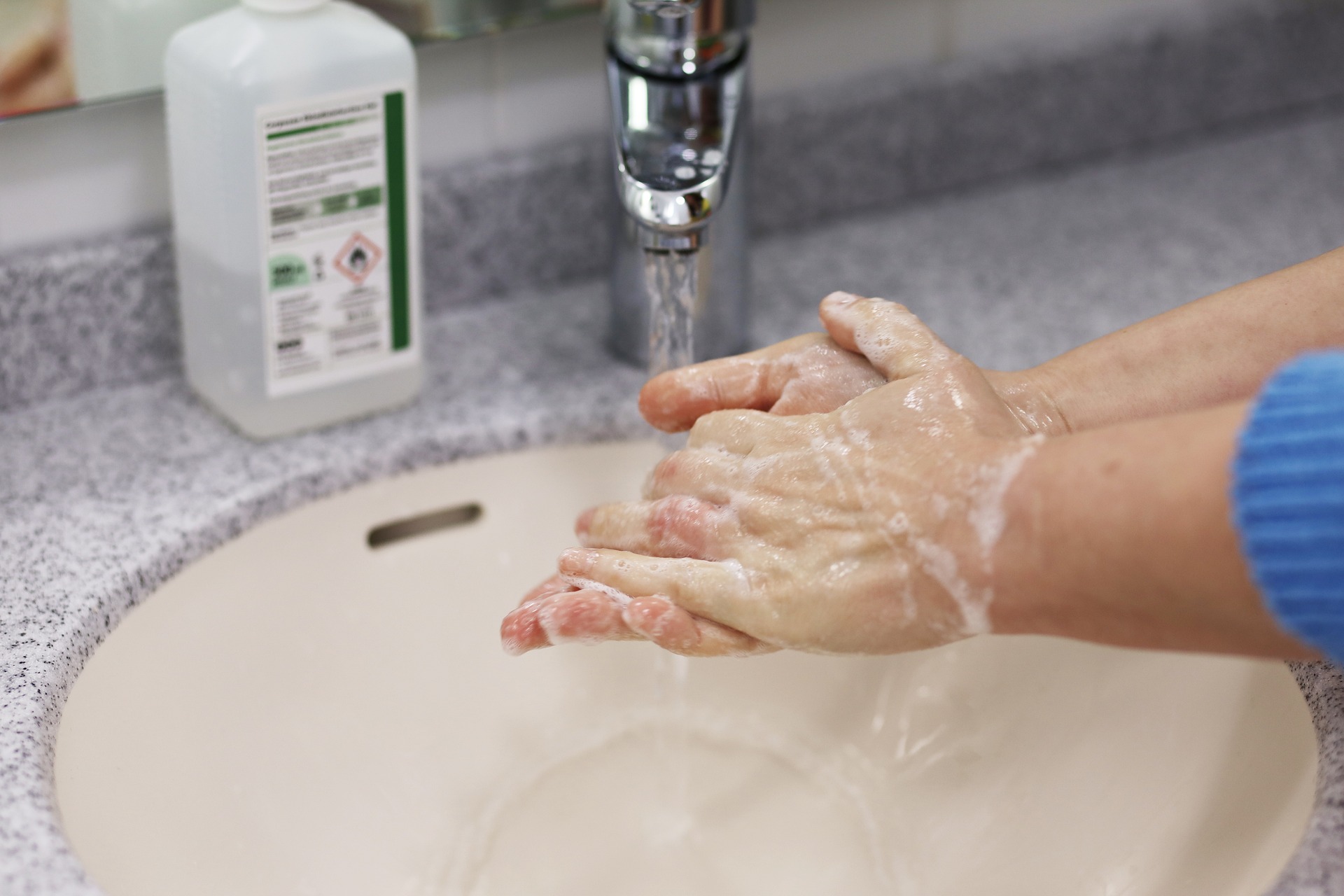Hydraulic penis pumps, also known as water-based pumps, are non-invasive devices that use warm water and vacuum pressure to support male sexual health. They are designed to improve erection quality and create temporary increases in penile size.
Page Contents
Introduction: What Are Hydraulic Penis Pumps?
These pumps differ from traditional air-based models by replacing air with water inside the cylinder. This allows for a more even distribution of pressure, greater comfort, and reduced risk of injury.
Common Reasons for Use
Men may choose hydraulic penis pumps for several reasons:
- To improve blood flow and achieve stronger erections
- To temporarily enhance penile length and girth
- To support sexual performance and confidence
- To incorporate into a general wellness routine without medications
How Hydraulic Pumps Differ from Air-Based Pumps
Water-based pumps offer distinct advantages over air pumps (also known as vacuum erectile devices):
- Pressure control: Water creates more consistent pressure on penile tissue
- Comfort: Warm water helps relax the skin and surrounding tissue
- Safety: Lower risk of bruising or uneven pressure-related injuries
- Ease of use: Can be used conveniently during bath or shower routines
General Popularity and Use
Hydraulic penis pumps are widely used due to their:
- Non-surgical approach
- Compatibility with daily hygiene routines
- Quick and easy setup
- Discreet use in private environments
However, it is important to recognize their limitations. These pumps provide short-term results and do not permanently increase size or correct curvature. Users looking for permanent improvements should explore penile traction devices, which apply controlled tension over time for structural changes.
Hydraulic penis pumps remain a useful tool for temporary enhancement and male sexual wellness when used correctly and consistently.
How Hydraulic Penis Pumps Work

Basic Mechanism
Hydraulic penis pumps operate using a vacuum system filled with warm water. The user fills the cylinder with water and inserts the penis into the chamber. By pressing or pumping the device, water is expelled, creating negative pressure. This vacuum draws blood into the penile tissues, causing engorgement.
The controlled pressure expands the corpora cavernosa—the chambers in the penis responsible for erections. This process results in a temporary increase in size and firmer erections. The presence of water helps distribute the pressure evenly, reducing the chances of injury or discomfort.
Role of Warm Water
Warm water is a key element in hydraulic pumps. It helps to:
- Relax blood vessels and soft tissue
- Promote better blood circulation
- Increase user comfort during pumping
- Minimize the risk of bruising or swelling
This makes hydraulic pumps more suitable for beginners or men with sensitive skin compared to air-based alternatives.
Components of a Typical Hydraulic Pump
A standard water-based penis pump includes:
- Cylinder: Holds water and encloses the penis
- Comfort ring or pad: Creates a tight seal and adds comfort
- Gaiter or bellows system: Generates vacuum pressure
- Release valve: Allows safe removal of pressure after use
Each component plays a role in safety, efficiency, and ease of use.
Pressure Dynamics
As pressure builds within the sealed chamber, the penis is gently stretched. This not only helps with temporary size gains but may also improve tissue elasticity over time. However, pressure must be regulated carefully. Most high-quality pumps include safety features to prevent excessive force.
Hydraulic pumps offer a consistent and gentle mechanism that supports short-term enhancement without the risks associated with dry pumps or manual stretching methods.
Benefits of Using Water-Based Penis Pumps
Improved Erection Quality
One of the primary benefits of hydraulic penis pumps is enhanced erection quality. By creating a vacuum around the penis, the pump draws blood into the erectile tissue. This increases firmness and can improve performance during intercourse. Many users report better control and sensitivity after regular use.
Temporary Size Enhancement
Water-based pumps can cause a visible, temporary increase in both length and girth. This occurs due to increased blood flow and expansion of the penile tissue. While the effect is not permanent, it can boost confidence and satisfaction in the short term.
Enhanced Comfort and Safety
The use of warm water makes hydraulic pumps more comfortable than air-based models. Water provides even pressure around the penis, reducing the risk of bruising, pinching, or discomfort. The warmth also helps relax soft tissue, allowing for a smoother pumping session.
Support for Penile Health
Regular use of a hydraulic penis pump may promote general penile health by:
- Encouraging better blood circulation
- Preventing erectile tissue rigidity
- Supporting elasticity and vascular response
Some men use these pumps as part of a wellness routine to maintain function, especially during periods of reduced sexual activity.
Non-Invasive and Drug-Free
Hydraulic pumps provide a non-invasive option for men who want to avoid medications or surgery. They require no prescriptions, have no chemical side effects, and can be used in the privacy of home.
Easy Integration into Daily Routine
Water-based pumps are often designed for use in the bath or shower. This allows for convenient, discreet use with minimal setup. The process typically takes 15 to 20 minutes and can be repeated several times per week.
For men seeking short-term enhancement, prevention of erection problems, and confidence, hydraulic penis pumps offer a practical and safe solution.
Step-by-step Usage Instructions

Preparation Before Use
Before using a hydraulic penis pump, it is important to prepare the body and device properly:
- Clean the pump with warm water and mild soap before and after each use.
- Take a warm shower or bath to help relax the penile tissue and improve blood flow.
- Trim pubic hair if necessary to ensure a proper seal between the device and skin.
- Read the manufacturer’s instructions carefully for model-specific details.
Step-by-Step Guide
- Fill the cylinder with warm water
Insert the pump into water and fill it completely while keeping the bottom sealed. - Insert the penis into the cylinder
Gently place the flaccid penis into the water-filled chamber. Ensure a tight seal at the base. - Create the vacuum
Start pumping to expel water and create pressure. This draws blood into the penis. - Maintain pressure
Most sessions involve 15 to 20 minutes of pumping. Follow a cycle such as 5 minutes of pumping, 1-minute break, then repeat. - Release pressure and remove
Use the release valve to safely equalize pressure before removing the device.
Frequency of Use
- Beginners: 2–3 sessions per week
- Advanced users: Up to 5 sessions per week
- Avoid more than one session per day
Aftercare
After use, dry the penis gently and apply a moisturizing cream if needed. Clean the pump thoroughly to prevent buildup of bacteria or mineral deposits.
Proper and consistent usage is essential for achieving results and preventing injury. Avoid rushing, over-pumping, or ignoring discomfort. A steady, controlled approach provides the best experience and supports sexual wellness.
Safety Tips and Precautions

Monitor Pressure Levels
Always use controlled pressure during pumping. Excessive force can cause:
- Bruising
- Red spots
- Blood vessel damage
Most modern hydraulic pumps have built-in safety valves. Do not disable or bypass these features. Stop immediately if you feel pain or numbness.
Use on Flaccid Penis
Only use the device when the penis is flaccid. Using it on a partially or fully erect penis can increase the risk of injury and reduce the effectiveness of the session.
Limit Session Duration
Do not exceed 20 minutes per session. Prolonged use can cause swelling or fluid buildup. For best results:
- Follow 5-minute pumping intervals with short breaks
- Limit sessions to once daily
- Start with 2–3 sessions per week and increase gradually
Check for Skin Irritation
Inspect the penis before and after each session. If you notice:
- Redness
- Soreness
- Skin breaks
Stop usage and allow time for recovery. Avoid using lotions or oils inside the pump, as they may interfere with the seal or irritate the skin.
Maintain Hygiene
- Wash the device before and after each use
- Use only clean, warm water
- Store in a dry, dust-free place
Hygiene reduces the risk of infection or skin irritation.
Avoid If You Have Certain Conditions
Consult a healthcare provider before using a hydraulic penis pump if you have:
- Blood clotting disorders
- Peyronie’s disease (without medical advice)
- Penile implants
- Active infections or wounds
Always prioritize safety and listen to your body. Discomfort is a sign to stop. Proper use protects your health and supports consistent, beneficial outcomes.
Expected Results and Timeline
Immediate Effects
Hydraulic penis pumps typically provide visible results right after use. Users often notice:
- Increased penile firmness
- Temporary length and girth expansion
- Improved erection quality
These effects usually last from 30 minutes up to a few hours. The warm water and vacuum pressure increase blood flow and engorgement, creating the temporary size enhancement.
Short-Term Results with Regular Use
With consistent use over weeks, some men report improvements beyond the immediate effects:
- Enhanced erection strength and duration
- Increased blood circulation
- Slight improvement in penile tissue elasticity
However, these benefits vary widely between individuals. Regular sessions, usually 2 to 5 times per week, are recommended to maintain results.
Limitations of Hydraulic Pumps
It is important to understand that hydraulic penis pumps do not cause permanent size increase. The temporary swelling from vacuum pressure reduces as blood flow returns to normal.
Hydraulic pumps also do not correct structural issues like penile curvature or deformities. For such conditions, penile traction devices or medical treatments are more appropriate.
Factors Influencing Results
Several factors impact the effectiveness of water-based pumps:
- Consistency and frequency of use
- Individual vascular health
- Age and general health status
- Correct use of the device following guidelines
Expectations Management
Users should view hydraulic pumps as a tool for temporary enhancement and improved sexual function rather than a permanent enlargement solution. Patience and proper use are key.
For men seeking lasting size gains or correction of curvature, penile traction devices are recommended. These devices apply controlled mechanical tension over time, promoting tissue growth and straightening.
Hydraulic penis pumps offer noticeable short-term results and may improve sexual wellness with regular use. However, permanent enlargement or correction requires additional methods.
Maintenance and Cleaning

Importance of Regular Cleaning
Proper maintenance and cleaning of hydraulic penis pumps are essential for hygiene, device longevity, and user safety. Since these devices come into direct contact with sensitive skin and bodily fluids, failure to clean them thoroughly can lead to bacterial growth, infections, or unpleasant odors.
Cleaning Steps
Follow these steps to clean your hydraulic penis pump after each use:
- Disassemble the pump. Remove any detachable parts such as the cylinder, gaiter, and sealing rings.
- Rinse with warm water. Use warm water to rinse off any residual fluids or lubricants from all parts.
- Use mild soap or antibacterial cleanser. Gently wash each component with mild, non-abrasive soap or an antibacterial cleaner suitable for medical devices. Avoid harsh chemicals or solvents.
- Thoroughly rinse. Rinse all parts again with clean water to remove any soap residue.
- Dry completely. Use a clean towel or allow parts to air dry in a dust-free environment. Moisture left inside can promote mold or bacterial growth.
- Reassemble and store properly. Once dry, reassemble the pump and store it in a cool, dry place away from direct sunlight and dust.
Additional Maintenance Tips
- Inspect parts regularly for cracks, wear, or damage. Replace any worn components promptly to maintain safety and effectiveness.
- Lubricate seals lightly if recommended by the manufacturer, using water-based lubricants only.
- Avoid sharing your pump with others to prevent cross-contamination.
Storage Recommendations
Store your hydraulic penis pump in its original case or a clean pouch. Keep it away from extreme temperatures, which may damage plastic or rubber components.
Maintaining cleanliness and proper care extends the life of the pump, ensures safe use, and supports hygiene. Regular cleaning after every session is a simple but critical step to enjoy the benefits of your device safely and effectively.
Combining Pumps with Other Devices for Better Results
Using Pumps as a Warm-Up
Hydraulic penis pumps can be effectively paired with other penis enhancement devices to improve overall outcomes. One of the most common strategies is using the pump or a vacuum erection device as a warm-up before traction device sessions. The warm water and vacuum pressure increase blood flow, relax tissues, and make the penis more receptive to gentle stretching. This preparation can enhance comfort and reduce the risk of strain when using a traction device.
Pairing with Penile Traction Devices
Penile traction devices, or penis extenders, work by applying consistent, controlled tension over extended periods. This method can lead to permanent length gains and help correct curvature. When combined with hydraulic pumping:
- The pump provides immediate temporary gains and improved circulation.
- The traction device builds on this state to encourage gradual tissue growth.
This combination supports both short-term enhancement and long-term results.
Potential Benefits of the Combination
- Better blood flow before traction improves tissue response.
- Enhanced comfort from warmed and stretched tissues.
- Faster visible results when used consistently.
- Versatility—pumps for immediate effect, traction for permanent gains.
Guidelines for Combined Use
- Use the pump first for 10–15 minutes in warm water.
- Follow with the traction device for the recommended duration by the manufacturer.
- Avoid excessive daily use to prevent overtraining and potential injury.
- Rest between sessions if any soreness or discomfort occurs.
Combining hydraulic penis pumps with traction devices allows men to benefit from the strengths of both methods. The pump provides quick, noticeable enhancement, while the traction device promotes lasting changes.
When used together, they can form a balanced approach for men seeking both immediate performance improvement and permanent enlargement or straightening.
Conclusion and Final Recommendations
Hydraulic penis pumps are effective tools for temporary male enhancement and sexual wellness. By combining warm water with vacuum pressure, they improve blood flow, enhance erection quality, and create short-term increases in size. They are comfortable to use, easy to integrate into daily routines, and generally safe when used according to instructions.
Benefits of Hydraulic Penis Pumps
- Improved erection quality through better circulation
- Temporary size enhancement in both length and girth
- Non-invasive and drug-free method
- Increased comfort and safety compared to air-based pumps
These advantages make hydraulic pumps an appealing choice for men seeking short-term performance boosts and greater confidence.
Important Limitations
Despite their benefits, hydraulic pumps do not provide permanent enlargement or correct structural issues like penile curvature. Gains disappear after circulation returns to normal, and results vary between users. Overuse or incorrect use can cause bruising or discomfort, making adherence to safety guidelines essential.
Popular Hydraulic Penis Pump
One well-known example of a hydraulic penis pump is a model designed specifically for use in the shower or bath, allowing men to take advantage of warm water for comfort and efficiency. This type of pump is built with a durable cylinder, a flexible gaiter for creating vacuum pressure, and a quick-release valve for safety.
Users often appreciate the way warm water surrounds the penis during use, as it helps maintain even pressure and reduces the likelihood of discomfort. The design also allows for discreet use, fitting naturally into a daily bathing routine without requiring additional setup.
For those who wish to understand how such a device performs in detail, exploring an in-depth Batmate review can provide valuable insights. A thorough evaluation can cover its build quality, comfort level, safety features, and potential outcomes, helping men make informed decisions before adding a hydraulic pump to their personal wellness routine.
Recommended Alternative for Lasting Results
For men seeking permanent length increase or curvature correction, penile traction devices are the most reliable non-surgical option. These devices work by applying controlled tension to the penis over time, promoting gradual tissue growth and straightening. While they require consistent daily use for several months, they are supported by more clinical evidence for lasting structural changes.
Final Advice
Hydraulic penis pumps can be a valuable part of a sexual health routine when used correctly and consistently. They are best suited for men who want immediate, short-term enhancement without medication or surgery.
For those with long-term enlargement or straightening goals, combining pumps with traction devices offers the most balanced and effective approach. Always follow manufacturer instructions and consult a healthcare professional when in doubt.

Dr. Jerry K is the founder and CEO of YourWebDoc.com, part of a team of more than 30 experts. Dr. Jerry K is not a medical doctor but holds a degree of Doctor of Psychology; he specializes in family medicine and sexual health products. During the last ten years Dr. Jerry K has authored a lot of health blogs and a number of books on nutrition and sexual health.
